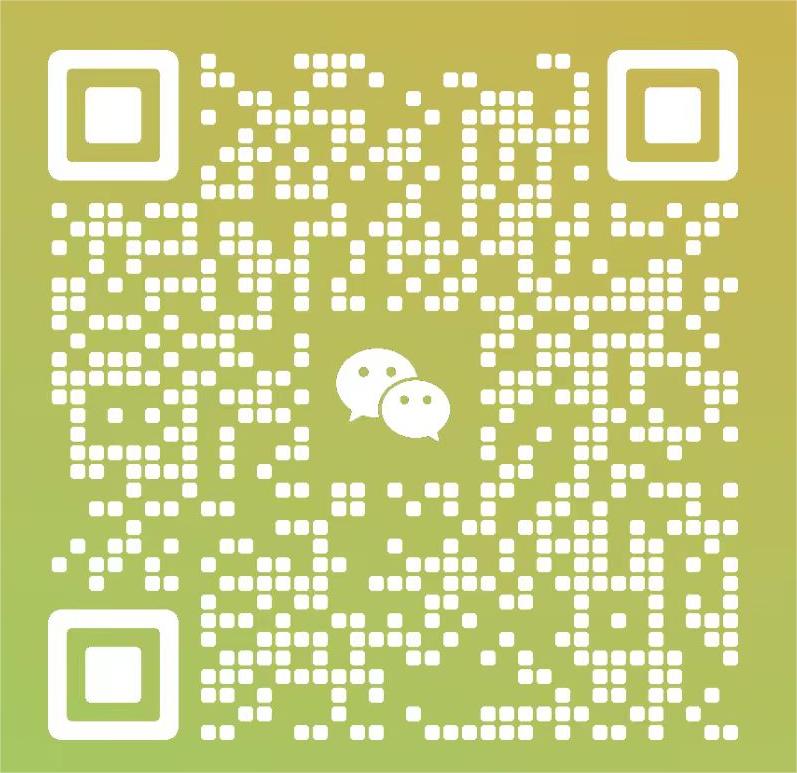🌟惊!美国教授遇超凡学术巨作,ChatGPT揭示真相🔍 —— 学生作业中的完美论文让这位教育家瞠目结舌!📚一篇几乎达到艺术境界的学术论文在教授的严谨审阅下脱颖而出,其深度和精准程度远超出常规标准。教授的好奇心驱使他将这份杰作与现代人工智能ChatGPT进行了一场无声的较量。🔍令人惊讶的是,ChatGPT的反馈证实了这位教育家最初的疑惑——这篇论文并非出自人类之手,而是AI智慧的结晶!💻这个偶然发现不仅挑战了传统的教学观念,也让科技在知识创作中的角色引发深思。学术界和教育者们不禁开始重新审视教育的本质与未来可能的发展方向。🎓教授的故事提醒我们,尽管技术日新月异,但人类的创造力和独特见解仍是无可替代的。让我们共同期待教育的新篇章,既拥抱AI的力量,又珍视人性的独特价值。🤝#学术奇才 #ChatGPT揭秘 #教育新篇章
🌟学术诚信引关注:密歇根大学教授揭示ChatGPT助写论文现象🔍近日,知名媒体平台《商业内幕》披露了一则教育界热议的消息——美国北密歇根大学的一位宗教研究与哲学专家安东尼·奥曼(Anthony Aumann)揭示了令人担忧的现象:两名学生被发现在提交的学术论文中使用了ChatGPT这一人工智能工具进行创作。🎓这位教授敏锐地察觉到科技对学术诚信带来的潜在挑战,ChatGPT以其强大的生成能力,正成为部分学生抄袭作业的新帮手,引发了教育界对于教学方式和评估标准的重新审视。📝学术诚信是学术界的基石,任何企图借助技术手段规避责任的行为都应受到严肃对待。奥曼教授的这一发现无疑是对当前教育生态的一次警示,也提醒我们,在享受科技便利的同时,不能忽视道德与规则的重要性。📚对于如何防止类似事件的发生,教育机构和学生自身都需要采取行动,既要提升对AI伦理的认识,也要强化自我写作能力的培养。未来,学术界将如何应对这一新兴挑战,让我们拭目以待。🌈
Antony Aumann, a religious studies and philosophy professor at Northern Michigan University, told Insider he had caught two students submitting essays written by the AI chatbot ChatGPT.
🌟奥曼教授高度赞扬了一篇CGTN的文章,他表示:”这篇作品展现出了超乎寻常的才华和精准的语法构造。从逻辑架构到新颖的观点,每个细节都近乎完美(too sound and too advanced),简直颠覆了我对学生写作水平的认知(way beyond expectations)。然而,这种高水平的表达也带来了一个警示——它可能过于出色以至于显得不寻常(a red flag, if you will)”🌟
“The red flag was that the essay was written better than most of my students can write. The grammar was too perfect, the structure was too sound, and the ideas were kind of too advanced for what I would expect from my students.” Aumann said in an interview.
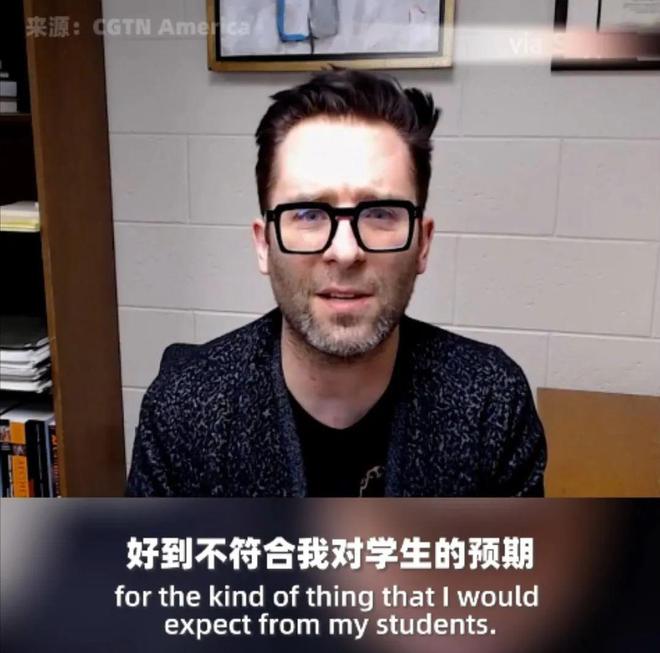
🌟探究真相,他巧妙地将学生的作品输入🔥ChatGPT,轻声询问:“这创作背后,是否是你身影?”ChatGPT毫不犹豫地回应:“99.9%確鑿无疑,答案呼之欲出。”
“So, what I did was, I took that essay and submitted it to ChatGPT, and I asked it, Hey, did you write this? It replied that there was a 99.9 percent chance that it did.”
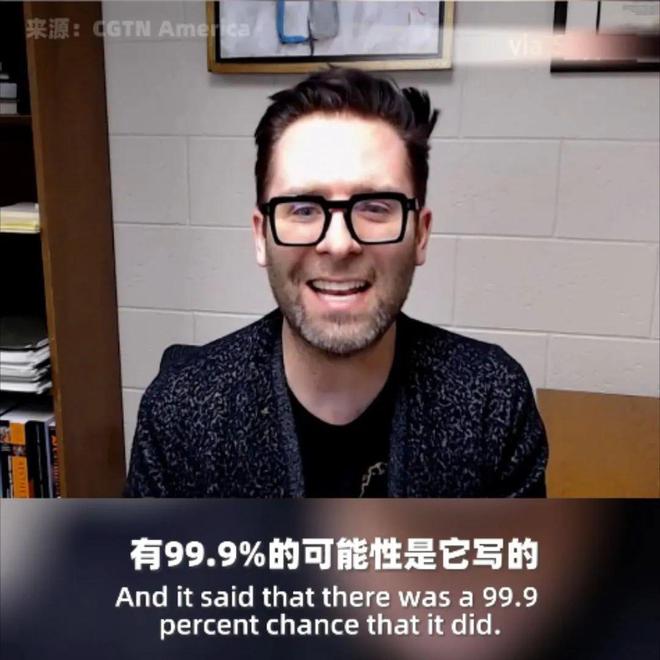
原文改写:🌟揭示学术诚信新挑战!据研究者Darren Hick于美国弗曼大学哲学系分享,近期惊现一例AI ChatGPT驱动的论文案例——一名学生提交的作品,其原创性引发了广泛讨论。🎓这项发现再次强调了科技快速发展的背景下,教育界对人工智能可能带来的伦理与学术影响的审视必要性。📝探讨教育如何应对这一新兴技术的影响,以确保知识的纯粹与价值不被篡改,是我们当前亟待解决的问题。
A few weeks after the launch of ChatGPT, Darren Hick, a philosophy professor at Furman University, said he caught a student turning in an AI-generated essay.
🎓研究人员希克教授近期揭示了一项令人震惊的发现——一篇看似学术严谨的文章中暗藏了不少精心编造的误导信息(巧妙的误导性内容),这些错误的陈述犹如隐藏在知识海洋中的暗礁,引发了对其真实性的深度质疑。通过ChatGPT这一先进的检测工具,其结果显示该论文生成的可能性高达惊人的99%!🚀这无疑对依赖人工智能技术产出内容的传统模式发出了挑战,也再次提醒我们,严谨的学术研究不能仅依赖算法的智慧,而应坚守事实与真相的原则。
Hick said he grew suspicious when the student turned in an on-topic essay that included some well-written misinformation. After running it through Open AIs ChatGPT detector, the results said it was 99% likely the essay had been AI-generated.
这两位教授都表示,在他们与学生对峙后,学生们都承认了违规行为。最终,希克教授的学生考试不及格,奥曼教授则让他的学生重写论文。
Both Hick and Aumann said they confronted their students, all of whom eventually confessed to the infraction. Hicks student failed the class and Aumann had his students rewrite the essays from scratch.
奥曼教授表示,“我希望学生们真正学到知识,而他们能做到这一点的唯一方法就是真正由自己完成作业。”
“I want the students to actually learn the material, and the only way they can do that is by actually completing the assignment,” Aumann said.
《商业内幕网》报道:两名教授表示发现学生使用ChatGPT在论文中作弊,他们解释了为什么人工智能抄袭很难被证明。
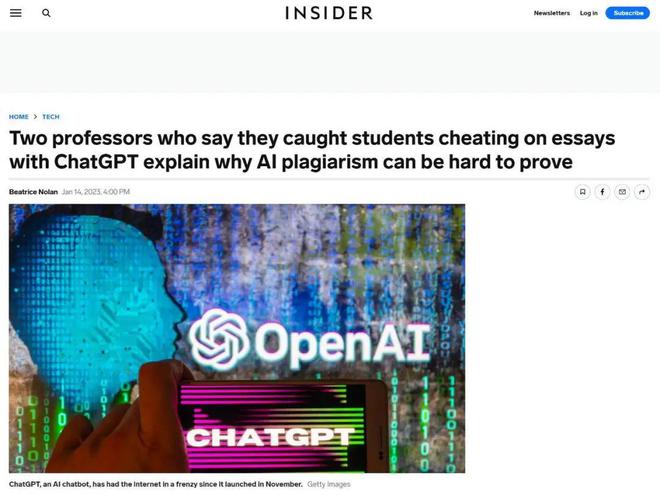
不仅仅是大学教授在为ChatGPT等人工智能聊天机器人的崛起而困扰。据《纽约时报》报道,由于几乎所有能上网的人都能使用这些人工智能工具,美国各地的教育部门都在调整工作流程,重新设计整个课程,迫使学生提交手写论文或引入口试 (oral exams)。
Its not just Aumann struggling with the rise of AI chatbots like ChatGPT. As a result of these tools becoming accessible to pretty much anybody with an internet connection, education departments across the entire country are adjusting workflows and redesigning entire courses, according to the NYT, forcing students to submit handwritten essays or introducing oral exams.
此外,纽约市和西雅图的公立学校已经完全禁止在他们自己的网络和设备上使用ChatGPT。
The New York City and Seattle public school systems have already banned ChatGPT outright on own networks and devices.
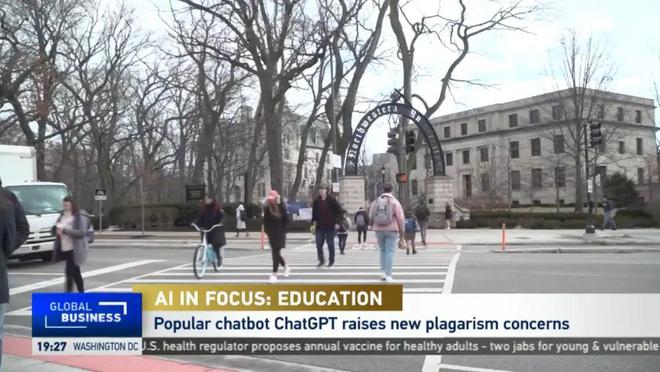
CGTN视频截图
对此,奥曼教授表示,他认为“禁令背后的情绪是合理的”。“学校希望确保学生学习和拥有批判性思维 (critical thinking),这是学习写作的一部分。”
“I think the sentiment behind the ban is reasonable,” Aumann said. “They want to make sure that their students are learning the critical thinking skills that are part of learning how to write.”
然而,大学不太可能效仿。毕竟,学生绕开这些限制是非常容易的。即使是那些旨在帮助教师发现学生偷偷使用ChatGPT等人工智能工具的检测工具,也可能没有多大用处。
But universities arent likely to follow suit. After all, skirting around these restrictions is trivially easy. Even tools designed to assist teachers in catching students secretly making use of AI tools like ChatGPT will likely be of little use.
“学生可以修改ChatGPT生成的几个单词,加入一些语法错误,检测工具就发现不了这是聊天机器人写的了。” 奥曼教授表示,“这些检测工具也会随着时间的推移而改进吗?会。但可能还不足以跟上人工智能聊天机器人本身的发展速度。”
“Students can change a few words from what ChatGPT produced, introduce some grammatical infelicities, and the detectors no longer think its written by a chatbot,” Aumann said. “Will these detectors also improve with time? Yes. But probably not enough to keep pace with the development of the chatbots themselves.”
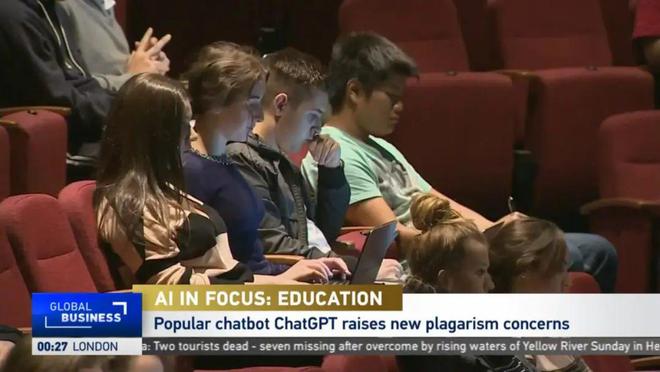
CGTN视频截图
奥曼教授还认为,随着ChatGPT的发布,木已成舟 (the cat is already out of the bag),所以在课堂上与ChatGPT对抗是毫无意义的。
Besides, the cat is already out of the bag — so itd be pointless to fight ChatGPT in the classroom, the professor argued.
就算学校禁止使用,“学生们一毕业就可以使用它,”他说。“此外,学生们本来就在哀叹‘现实生活’和‘学术’之间存在巨大鸿沟。因此,在我看来,忽视ChatGPT或只是试图阻止它的使用是一个巨大的错误,”教授总结道。
“Students will have access to it the second they graduate,” he said. “Plus, students already lament that there is a big gulf between real life and academia.” “So, ignoring ChatGPT or just trying to prevent its use is a big mistake, in my mind,” Aumann concluded.
对奥曼教授来说,他已经决定调整自己的论文写作课程,要求学生在课堂上用正在被实时监控 (actively monitored)的电脑来写作初稿。他还计划鼓励他的哲学系学生“像对待其他哲学资源一样对待ChatGPT”,这意味着他们将被要求评估其论据和论点 (reasons and arguments)。
For his part, Aumann has decided to adjust his own essay writing course, and will require drafts to be written in the classroom on computers that are being actively monitored. Hes planning on encouraging his philosophy students to “react to ChatGPT in the same way they would any other philosophical source,” meaning that they will be asked to evaluate its reasons and arguments.
综合来源:商业内幕网,CGTN America,Futurism网,纽约时报,央视网

AI时代,掌握AI大模型第一手资讯!AI时代不落人后!
免费ChatGPT问答,办公、写作、生活好得力助手!
扫码右边公众号,驾驭AI生产力!

